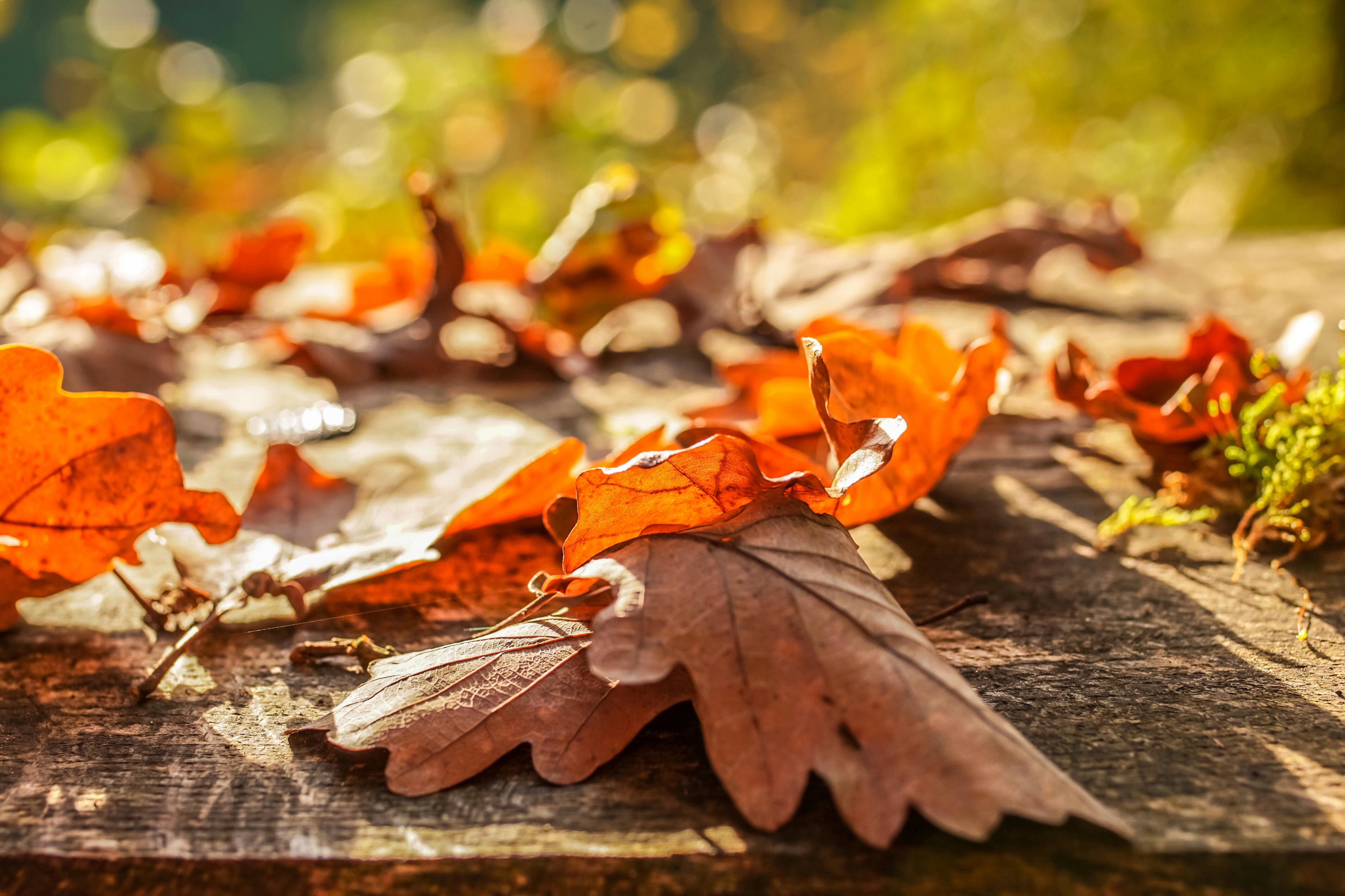One of the most common questions asked by blueberry growers is “Why are my blueberry leaves turning brown?” This may be caused by a variety of environmental, nutritional or disease-related factors. Knowing what to look for and how to address the issue can help restore healthy blueberry plants.There are several possible reasons why blueberry leaves are turning brown. One of the most common is an excessive amount of sunlight, which can cause the leaves to burn and turn brown. Another potential reason is water stress, either from lack of water or too much water. This can cause the leaves to dry out and become brown. Insufficient nutrients in the soil can also cause blueberry leaves to turn brown, as they may not be getting enough of certain minerals and elements needed for healthy growth. Lastly, blueberry plants can sometimes suffer from fungal diseases like leaf spot or anthracnose, which can cause their leaves to turn brown.
Common Causes of Browning Blueberry Leaves
Browning of blueberry leaves can be caused by a variety of factors. The most common causes include drought stress, nutrient deficiencies, disease, insect damage, and winter injury. Drought stress occurs when the soil moisture is too low for the plant to take up the water it needs. Nutrient deficiencies can be caused by a lack of certain essential minerals in the soil. Diseases such as botrytis blight can cause brown spots on blueberry leaves that can eventually lead to browning. Insect damage is another common cause of browning leaves which can be caused by leaf rollers, aphids, and other leaf-feeding insects. Finally, winter injury is a common cause of browning leaves in blueberries because they are not cold hardy plants and are susceptible to cold temperatures and winter winds.
It is important to identify the cause of browning leaves in order to properly diagnose and treat the problem. If you suspect that drought stress or nutrient deficiencies are causing your blueberry’s leaves to brown, you should check your soil’s moisture level and nutrient balance first before treating for any other potential causes. If insect damage or diseases are suspected, you should inspect your plants for signs of these pests or diseases and use an appropriate treatment method to control them if necessary. In cases of winter injury, you may need to take steps to reduce the exposure of your plants to cold temperatures or winds during periods when they are most vulnerable.
Diagnosing the Problem: Identifying Browning Blueberry Leaves
Browning of blueberry leaves is a common issue that can be caused by various factors, such as environmental stress, pests, or disease. The first step in diagnosing the problem is to identify the type of browning that is occurring. Browning can appear as spots, mottling, or general yellowing of the leaves. Spots may appear as tan, brown, or black and are usually more obvious on younger leaves. Mottling occurs when large patches of yellow or brown appear on the leaves. General yellowing appears when entire leaves become discolored with a uniform yellowish hue.
The next step in diagnosing the problem is to determine what could be causing the browning. If environmental stress is suspected, check for signs such as extreme temperatures or drought conditions that could be causing the browning. Pest infestations should also be considered and can be identified by looking for signs of damage on the leaves from insects or other animals. Disease can also cause leaf browning and should be considered if there are other symptoms present such as wilting or discolored spots on the leaves.
Once all possible causes have been identified, it’s important to take steps to address them in order to prevent further damage to your blueberry plants. If environmental stressors are present, make sure to provide adequate water and shade if necessary. For pest infestations, use insecticides or traps according to label instructions if needed to control populations and prevent further damage. Finally, if disease is suspected contact a local plant pathologist for help in identifying and treating any potential problems quickly before they spread throughout your plants.
In conclusion, diagnosing browning blueberry leaves requires careful observation and accurate identification of possible causes before taking any action. By carefully monitoring your plants for signs of environmental stressors, pests, and diseases you can take steps quickly to protect your blueberries from further damage and ensure a successful harvest season!
Nutrient Deficiencies Leading to Browning Leaves
Plants need a variety of nutrients in order to survive and thrive. When a plant is lacking one or more of these essential nutrients, it can begin to suffer from browning leaves. This can be caused by a variety of factors, including environmental conditions, incorrect fertilizer application, and nutrient deficiencies. Nutrient deficiencies can lead to browning leaves in plants, so it is important to identify and address the issue quickly.
The most common nutrient deficiencies that lead to browning leaves are nitrogen, phosphorus, and potassium. Nitrogen is essential for healthy leaf growth and photosynthesis; when plants are lacking this nutrient, the leaves will begin to turn yellow or brown. Phosphorus is necessary for flowers and fruits; when plants lack this nutrient, their leaves may become yellow or purple. Potassium is important for strong stems and roots; if there is not enough potassium in the soil, the leaves will become dry and brittle.
Other nutrients that can lead to browning leaves include calcium, magnesium, sulfur, iron, manganese, boron and zinc. Calcium helps strengthen cell walls; if there isn’t enough calcium in the soil then the plant’s cells will become weak which may cause yellow or brown spots on the leaves. Magnesium helps with chlorophyll production; if there isn’t enough magnesium in the soil then plants may experience yellow or brown spots on their leaves as well as curling edges. Sulfur helps regulate other nutrients; a lack of sulfur can cause yellowing between leaf veins as well as stunted growth. Iron helps with chlorophyll production; an iron deficiency may result in yellow spots on the leaves as well as slow growth. Manganese helps with photosynthesis; a lack of manganese can cause yellow-brown spots on the edges of the leaf while boron helps with flowering and fruiting; without enough boron plants may have distorted growing tips or stunted growth while zinc aids in root development; an inadequate amount of zinc can cause yellowish-brown spots on the middle of the leaf among other symptoms such as stunted growth or wilting foliage..
It is important to identify which nutrient your plant is lacking so you can take corrective action quickly. The best way to do this is by testing your soil for nutrient levels or performing a tissue test on your plant’s foliage – both tests should tell you exactly what nutrients your plant needs in order to thrive again. Once you know what nutrients your plant needs you can amend your soil accordingly or use fertilizer specifically designed for that particular plant species – either way you will be able to get your plant back into tip top shape again!
Improving Soil Fertility to Prevent Blueberry Leaf Browning
Blueberry leaf browning is a common problem in blueberry fields. It is caused by a lack of essential nutrients in the soil. Improving soil fertility can help prevent this issue and ensure healthy blueberry plants.
The first step to improving soil fertility is to test the soil for nutrient levels. This will provide valuable information about what elements need to be added. Soil testing kits are available at most gardening stores or online. If the test results indicate that certain nutrients are lacking, then these should be added in order to restore proper balance in the soil.
Organic matter can also be added to improve soil fertility and help prevent blueberry leaf browning. Manure, compost and mulch are all excellent sources of organic matter that can help add essential nutrients and improve drainage in the soil. For best results, a combination of these should be used together.
Fertilizers can also be used to supplement the soil with additional nutrients and minerals needed for healthy blueberries plants. There are several types of fertilizers available, including both liquid and dry formulations. While organic fertilizers may take longer to break down, they will provide more sustained nutrition over time than synthetic varieties.
Finally, it is important to monitor the pH level of the soil on a regular basis as well as its nutrient content. The ideal pH balance for blueberries is between 4-5, while optimal nutrient levels vary depending on the variety of blueberries being grown. Regular testing and adjustment of these levels can help ensure that your plants remain healthy and productive for many years to come.

Dealing with Insect Infestations on Blueberry Plants
Blueberry plants are a popular addition to any garden or landscape, but they can be susceptible to insect infestations. These infestations can damage the plants and reduce the amount of fruit they produce. To ensure your blueberry plants remain healthy and productive, it is important to know how to deal with insect infestations.
The first step in dealing with an infestation is to identify the insects that are causing the problem. Common blueberry pests include aphids, thrips, and spider mites. Once you have identified the pests, you can determine what type of control methods are necessary.
There are several ways to control insect infestations on blueberries. Physical removal is one option, which involves manually picking off the insects from the plants. Chemical sprays are also available for many types of insects, although they should be used sparingly and only after consulting with a professional pest control expert.
In addition to controlling existing insect populations, it is important to take preventive measures to reduce future infestations. Planting companion crops such as marigolds or nasturtiums near blueberries can help deter pests from attacking your plants. Keeping your garden clean and free from debris will also help prevent insect populations from taking hold in your garden.
By taking proactive steps and using effective controls, you can keep your blueberry plants healthy and productive for years to come.
Protect Your Blueberries from Disease and Pests
Blueberries are a popular fruit and a great addition to any garden. However, they are also prone to disease and pests that can damage the plants and reduce the yield of fruit. Fortunately, there are some ways to protect your blueberries from disease and pests.
The first step in protecting your blueberries is to keep the soil healthy. Make sure you check the pH levels in your soil regularly; blueberries prefer an acidic soil with a pH between 4.0-5.5. If needed, use a fertilizer that is specifically formulated for acid-loving plants, such as those containing sulfur or ammonium sulfate.
Be sure to water regularly using drip irrigation or soaker hoses, as this will help keep the soil moist without over-watering the plants. Mulching around the base of the plants can also help keep moisture in and weeds out, while providing essential nutrients back into the soil as it breaks down over time.
It is also important to remove excess foliage from around the base of your blueberry bushes during pruning season, as this can help prevent disease by allowing more air circulation around the plant. Pruning should be done in late winter or early spring before new growth begins; you should remove any dead or diseased branches as well as ones that will not produce fruit this season.
Finally, make sure to monitor for signs of pests such as aphids or caterpillars, which can cause damage to your blueberry plants if left unchecked. If you notice these pests on your blueberry bushes, use an insecticidal soap or spray designed specifically for use on fruit trees and shrubs; this will help keep them away without harming beneficial insects like bees or butterflies.
By following these simple steps, you can help ensure that your blueberry bushes stay healthy and productive for years to come!
When to Prune Infected or Dead Leaves from Your Blueberries
Pruning infected or dead leaves from your blueberry bushes is an important part of maintaining a healthy and productive crop. Pruning should be done at the right time of year to ensure that your plants receive the most benefit. That said, it is important to understand when and how to prune your blueberry bushes in order to get the best results.
The best time of year to prune your blueberry bushes is in the late winter or early spring before new growth begins. At this time, you will be able to see any dead or diseased leaves that need to be removed. Pruning should also be done regularly throughout the growing season as needed. This will help keep your plants healthy and productive throughout the year.
When pruning your blueberry bushes, always use sharp pruning shears and make sure that you are removing any dead or diseased leaves as well as any branches that are too long or too short. When removing branches, always cut back to a bud or branch junction in order to encourage new growth. Additionally, keep an eye out for any pests or disease that may be affecting your plants and take action accordingly.
It is also important to consider the amount of pruning you are doing on your blueberry bush. Too much pruning can cause stress on the plant and can lead to a decrease in fruit production. Generally, it is recommended that you only remove up to 25 percent of foliage each year in order to ensure healthy growth for future harvests.
By understanding when and how to properly prune infected or dead leaves from your blueberry bushes, you can ensure that your plants remain healthy and productive for years to come. With regular maintenance and care, you can make sure that you have a bountiful harvest every year!

Conclusion
Blueberry leaves turning brown can be caused by numerous factors. It is important to identify the cause of browning and make sure the blueberry plants are receiving proper care. Nutritional deficiencies, over-watering, pests and diseases may all be contributing factors. If possible, it is best to identify the issue and address it as soon as possible. Blueberries that are planted in appropriate soil, receive adequate sunlight and water, and are regularly pruned can help to ensure a good crop each year.
For more information on blueberry care, contact your local extension office or consult with a certified arborist who can walk you through the steps for proper care of your blueberry plants. With proper attention and maintenance, you will be able to enjoy an abundant blueberry harvest each season.



